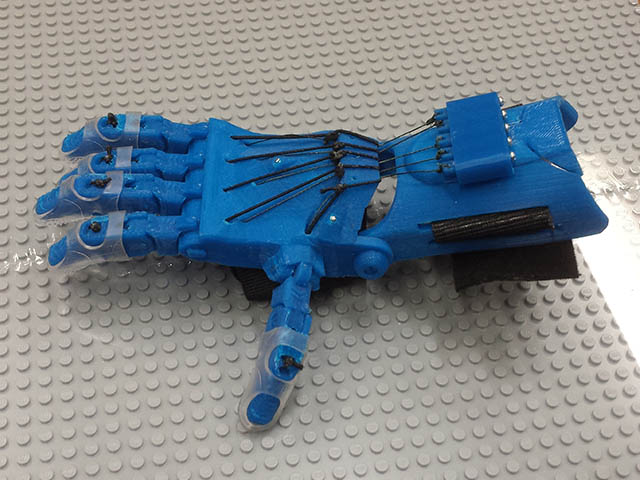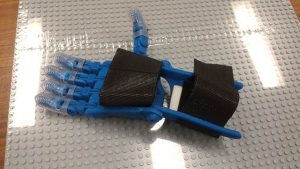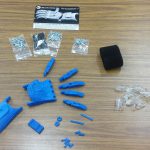Evan Todd-McCoy
Aug 18, 2016
Overview
http://enablingthefuture.org/upper-limb-prosthetics/raptor-reloaded/
 This hand was developed to be a low-cost, almost completely 3D printable prosthetic hand. It uses a combination of extra parts, which are not printable, to provide the mechanics. It is a very simple mechanical device, with no electronic or digital elements.
This hand was developed to be a low-cost, almost completely 3D printable prosthetic hand. It uses a combination of extra parts, which are not printable, to provide the mechanics. It is a very simple mechanical device, with no electronic or digital elements.
RE: Meangingful Making — this hand was also developed and used for the “Hand Challenge.” http://www.handchallenge.com/
The Hand Challenge is a charity action in which children are to print and assemble these hands to be redistributed where they are needed.
Printing the hand in PLA with a properly calibrated printer posed few issues. However, the 100% sized hand includes pins which warp at the recommended resolution (with a Prntrbot Play) and had to be finished with exacto knives and sandpaper to work properly. This lowers their strength, however, and overzealous finishing could lead to slippery parts that don’t stay connected.
Assembling the Hand
This process was difficult but the Raptor has a purchasable kit with all the required parts. The difficulty comes in with the kits, which feature links to instructions that are outdated or matched to the wrong iteration of the hand. The website above has much better instructions for building the hand, but I followed those given in the kit and made several mistakes. As a result, the tension in the hand is not adjustable as I was forced to use adhesive to keep the tension pins connected to their base. This means the whole tension mechanic of the hand is cosmetic.
The kit itself has no clear instructions about which parts to use. They helpfully provided extra pieces of foam padding, velcro, screws, and the flexible and inflexible cords. However, it is not immediately clear which to use for which size of print. At 100%, the hand is child-sized and requires the smallest set of screws. Videos indicate that printing at a larger size is possible and effective, but our printer was not capable of going any bigger.
Conclusion
 This would make a fun “making for meaning” project in a school environment. However, it would require the efforts of small groups rather than individuals, depending on the age of the students. I think students of all ages would appreciate printing and assembling this hand as a project because it is stimulating and challenging, even when following guided instructions. I would recommend the parts and hardware kits for younger students with older students being challenged to assess the parts needed and source them from available supplies.
This would make a fun “making for meaning” project in a school environment. However, it would require the efforts of small groups rather than individuals, depending on the age of the students. I think students of all ages would appreciate printing and assembling this hand as a project because it is stimulating and challenging, even when following guided instructions. I would recommend the parts and hardware kits for younger students with older students being challenged to assess the parts needed and source them from available supplies.
Added challenge could be provided in the form of “building blind” after some instruction on the principles of design and mechanics that went into the hand’s original design. In that scenario, assembling the hand would be an appropriate major project for a unit in Physics or IA that dealt with mechanics.
